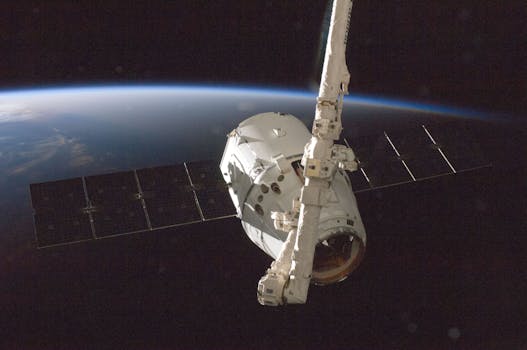
LEO Satellites: Revolutionizing Global Connectivity with WordPress
Low Earth Orbit (LEO) satellites are transforming the way we communicate and access information, and with WordPress, it’s easier than ever to stay connected and share knowledge. LEO satellites are a type of satellite that orbits the Earth at an altitude of around 160 to 2,000 kilometers, which is much lower than traditional geostationary satellites. This lower altitude allows for faster data transfer rates, lower latency, and more efficient communication.
LEO satellites have the potential to provide global connectivity, even in areas where traditional internet infrastructure is lacking. With the help of WordPress, individuals and organizations can create websites and share information with people all over the world, regardless of their location or access to traditional internet services. WordPress is an ideal platform for creating websites that are accessible via LEO satellites, as it is highly customizable and can be optimized for low-bandwidth connections.
How LEO Satellites Work
LEO satellites work by transmitting and receiving data to and from Earth-based stations. They use a range of frequencies, including Ku, Ka, and V bands, to communicate with devices on the ground. The data is then transmitted to a network of ground stations, which forward it to its final destination. This process allows for fast and reliable communication, even in areas with limited or no traditional internet connectivity.
One of the key benefits of LEO satellites is their ability to provide low-latency communication. Because they are in a lower orbit, they have a shorter distance to travel to reach the Earth’s surface, which results in faster data transfer rates. This makes them ideal for applications that require real-time communication, such as video conferencing, online gaming, and financial transactions.
Applications of LEO Satellites
LEO satellites have a wide range of applications, including providing internet access to remote or underserved communities, supporting emergency response and disaster relief efforts, and enabling IoT (Internet of Things) connectivity. They can also be used for Earth observation, weather forecasting, and climate monitoring.
In addition to these practical applications, LEO satellites are also being used for scientific research and exploration. For example, NASA’s TESS (Transiting Exoplanet Survey Satellite) mission uses a LEO satellite to search for exoplanets and study the properties of nearby stars. The European Space Agency’s (ESA) Swarm mission uses a constellation of LEO satellites to study the Earth’s magnetic field and its interactions with the solar wind.
Challenges and Limitations
While LEO satellites offer many benefits, they also have some challenges and limitations. One of the main challenges is the need for a large constellation of satellites to provide global coverage. This requires significant investment and infrastructure development, including the launch of multiple satellites and the establishment of a network of ground stations.
Another challenge is the risk of interference from other satellites and terrestrial systems. LEO satellites operate in a crowded frequency band, and there is a risk of interference from other satellites and terrestrial systems. This can result in reduced performance and availability of the satellite system.
Conclusion
In conclusion, LEO satellites are transforming the way we communicate and access information, and with WordPress, it’s easier than ever to stay connected and share knowledge. While there are challenges and limitations to the use of LEO satellites, their potential to provide global connectivity and support a wide range of applications makes them an exciting and rapidly evolving field.




